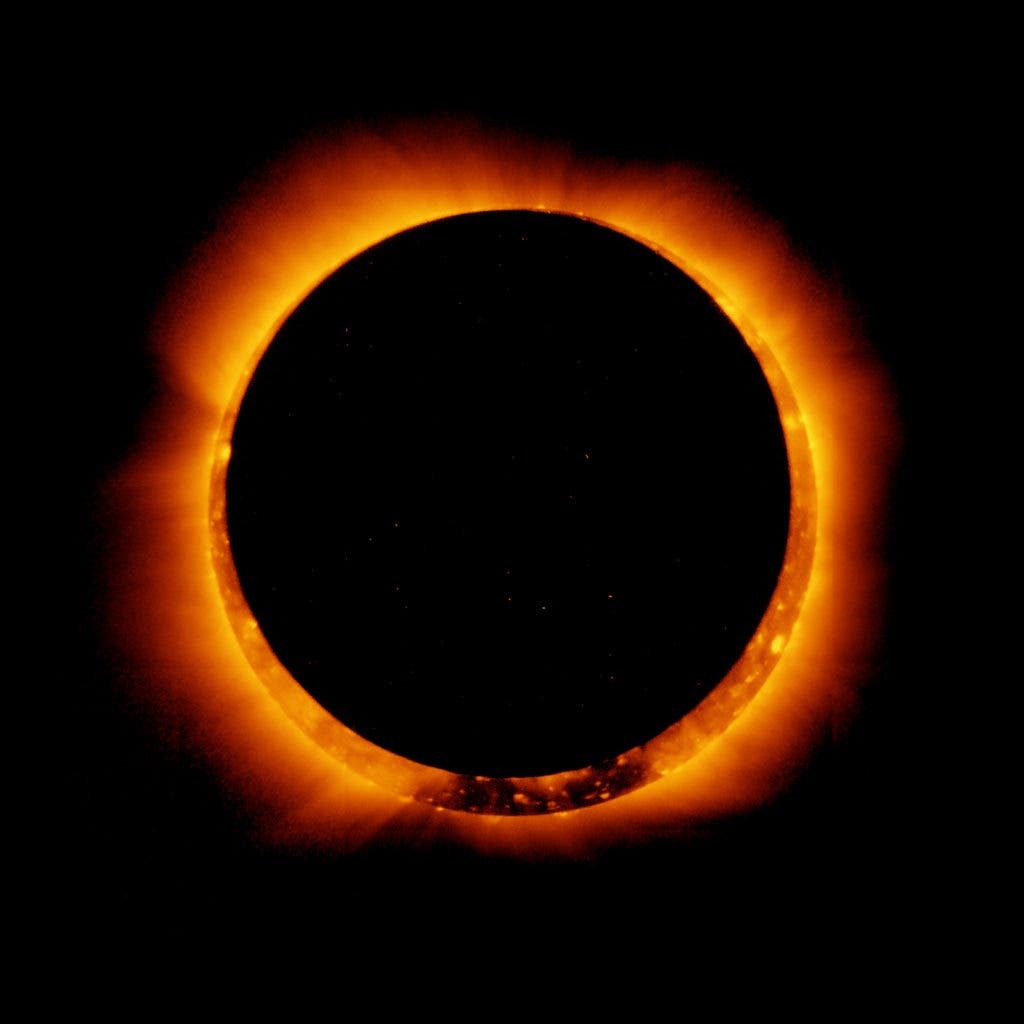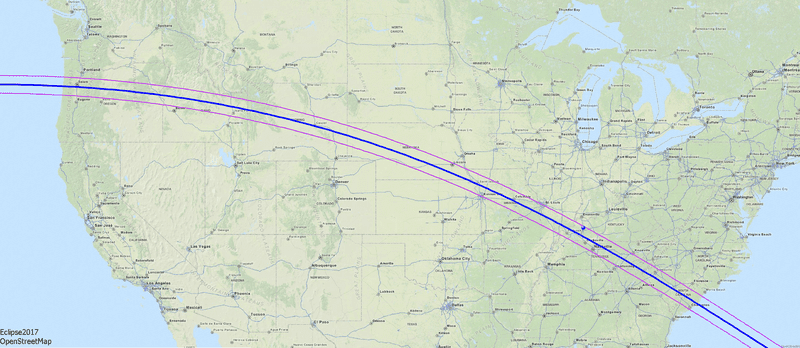
In 2011, the Hinode satellite captured these breathtaking images of an annular solar eclipse. Image credits: Hinode/XRT/NASA.
There’s a lot of hype around the 21 August solar eclipse — after all, it’s one of the most awe-inspiring sights you can ever see, the entire sun being blocked for a brief period. But eclipses also bring a bit of confusion in the “will it be visible in my area” and “how do I see it” areas. Well, Google and UC Berkeley have teamed up and created a special simulator which lets you answer those questions just by inputting your zip code.
The simple and intuitive map reveals where you are compared to the path of totality (where the Sun’s light will be completely blocked off by the Moon). You just input your ZIP code, the name of your city or town and the simulator returns an animation of the Sun’s movement across the sky over a three-hour period. Of course, it’s not in real time — you get to see it in a few seconds. An example for Warm Springs, Oregon, which is near the center of the path of totality, is shown below.
Even if you’re outside (but still nearby) this path, you’ll still get a bit of a celestial show. As the Moon moves in, it will eclipse a part of the Sun, but you’d only be set for a partial instead of a total eclipse. Personally, I think this is still pretty awesome, but at least some researchers disagree.
“If you are off to the side — even just a little bit where the sun is not 100 percent covered by the moon — it is like being in the parking lot of the stadium during the Super Bowl but not really inside seeing the game,” said Jay Pasachoff, the Field Memorial Professor of Astronomy at Williams College and the Megamovie team’s expert eclipse adviser.
This full eclipse will be visible from a narrow corridor across the continental US, with the longest duration of totality being 2 minutes 41.6 seconds just south of Carbondale, Illinois. Of course, it’s a rare sight and the first eclipse that’s visible in the US since the solar eclipse of March 7, 1970. Oregon, Idaho, Wyoming, Nebraska, Missouri, Illinois, Kentucky, North Carolina and South Carolina will be on the path of totality, as can be seen below.

Map of the full and partial eclipse corridor, with data from OpenStreetMap. Image credits: Wolfgang Strickling.
As you can see, it’s quite a narrow corridor, so using tools such as the one created by Google and Berkeley can let you know what you’ll get a chance to witness, with remarkable accuracy. Dan Zevin, who is on the team leading the project at UC Berkeley’s Space Sciences Laboratory praised the quality of the simulation.
“There are lots of online animations of the 2017 eclipse, but you can’t use them like ours to get a sense of the full experience, including your surroundings,” Zevin said in a press release. “Our simulation is closer to what one might experience in a planetarium show.”
Elsewhere in the world, only Iceland and Scotland will be seeing the full eclipse, but even so, it’s only a partial eclipse. In the UK, Norway, the Netherlands, Belgium, France, Spain, and Portugal, the sunset will overlap the eclipse.
Before the August 21 eclipse rolls around, the Megamovie Project has plenty of resources and NASA explainers to help you understand everything there is about the solar eclipse. You’ll also be able to contribute with your own photos — which we also encourage you to do. NASA also has a dedicated page worth checking out, starting from the astronomy fundamentals of an eclipse, to how to organize an eclipse party.










